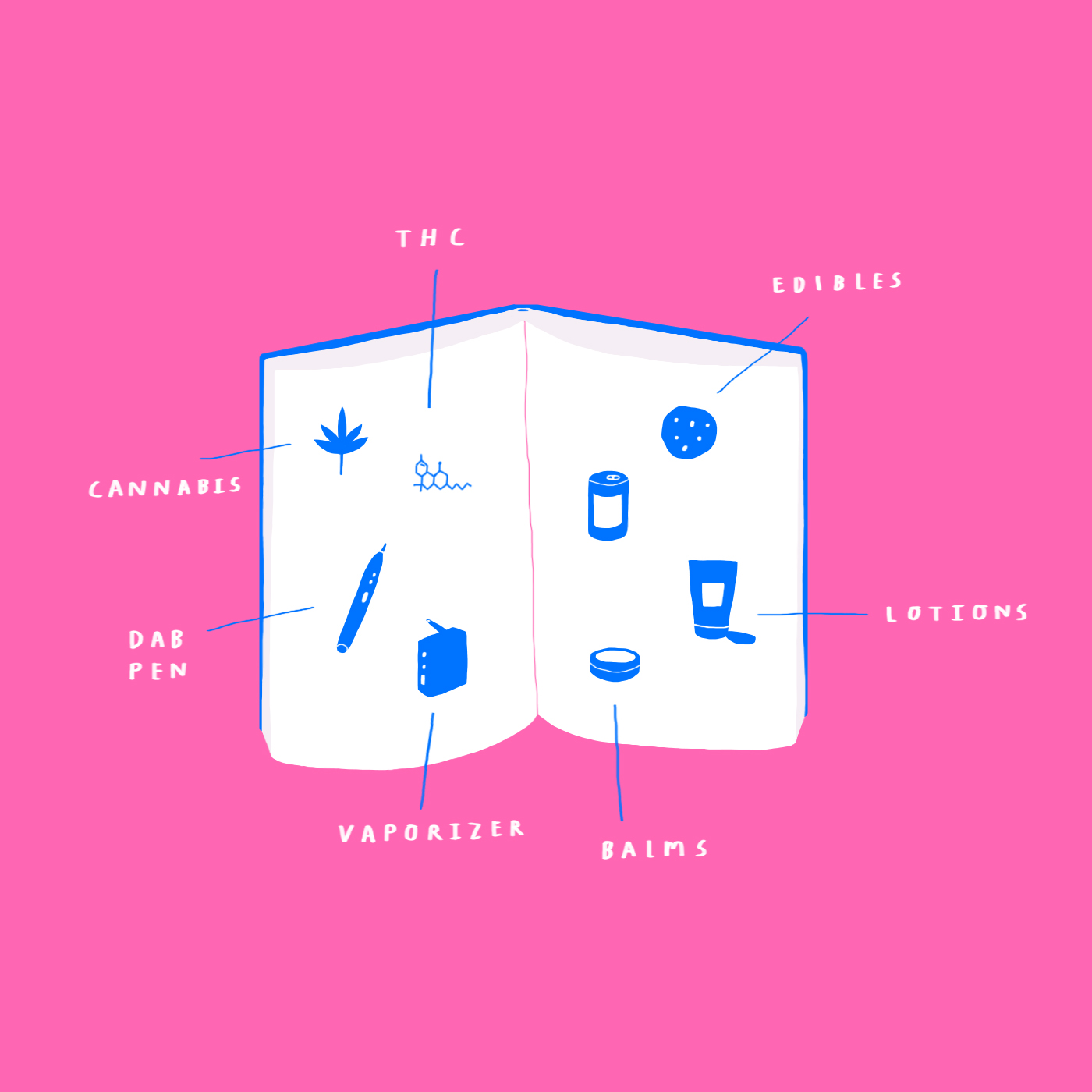Illustration by Dale Crosby Close
Brought to you by:
The language of cannabis has changed dramatically over the last twenty years. Here are the basic terms you need to know to be an informed consumer in Canada’s new legalized landscape.
Cannabis: The genus of flowering plant to which psychoactive marijuana and non-psychoactive hemp belong.
THC: The psychoactive chemical compound found in cannabis (this is what gets you high).
Cannabidiol (CBD): The compound in cannabis that is not psychoactive, but has been credited with alleviating anxiety.
CBN: A cannabinoid compound found to have sedating, but not psychoactive, effects in certain dosages.
Sativa: A strain of cannabis that many users experience as psychoactive and stimulating or energizing.
Indica: A psychoactive strain thought to have more of a calming, sedative effect and creating an all-over body high (an easy way to remember the effects of Indica is “In da couch”).
Microdosing: Taking a very low dose of THC. This is more controllable with precisely dosed edibles and digitally calibrated vape pens, which come in doses as low as 2.25mg of THC per inhale. The concentrates vape pens require won’t be legal until October 19, 2018. Since flower will be readily available after October 17, 2018, new users should approach inhalation slow and low as titrating your exposure to THC is difficult due to the variables in the potency of cannabis flower. Taking a small “mouth hit” in which you hold the smoke in your mouth, rather than your lungs, is a wise first move.
[vc_separator]
View more content from our Civilized series.
[featured_posts style=”style-16″ category=”civilized” number=”2″]
[vc_separator]
Topicals: Creams, lotions, salves, balms, sprays, and oils that are infused with CBD, THC, or a combination of the two. Since these cannabinoids can’t reach the bloodstream, they will not get users high, though they do reach cannabinoid receptors in local tissues. As such, these are believed to reduce inflammation, pain, and soreness in joints and muscles.
Edibles: Any food or beverage product that contains THC and/or CBD. The onset of any psychoactive reaction can take between 45 minutes and two hours, and the high can last for up to six hours or more. The sustained effect is useful in medical applications or to encourage a long night’s sleep.
Vaporizer: An electrically powered inhalation tool that heats dried cannabis flower without combusting it, making it less wasteful than smoking a joint. Depending on the brand and model, vaporizers can be used with wax, oils, hash, or pre-loaded cartridges. While the dry-herb variety are available for purchase, vaporizers that use concentrates, oils, and cartridges won’t be legal for a year
Wax or dab pen: A small, pen-sized electronic vaporizer that allows for discrete smoking of THC concentrates such as wax and oil.
Terpene: The essential oils or organic compounds in the marijuana plant that give each strain its distinct aromatic notes and flavours. Fresh and fragrant OG Kush, for example, contains terpenes such as lemony limonene; ocimene, which also shows up in mint; and linalool, which you’ll also find in lavender. And that famous funky note? That’s myrcene.
Concentrates: An almost dizzying array of very potent oils, waxes, tinctures, and other substances are procured through a variety of extraction processes. These include leaf sifting, compression of the marijuana plant’s resin, alcohol infusion, butane or CO2 extraction. While few extractions will be available in October 2018, the smoke-averse will be able to infuse their own tinctures and consume marijuana as a beverage.
This story is part of our Civilized series from our September 2018 issue. Click here for more content from the series.








